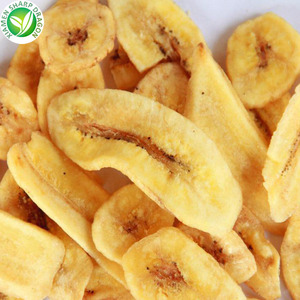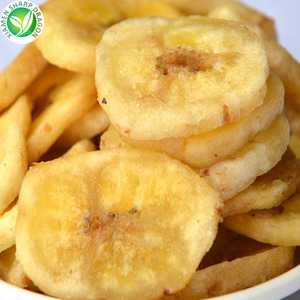
All categories
Featured selections
Trade Assurance
Buyer Central
Help Center
Get the app
Become a supplier

(149 products available)




















































Bitter cassava dried chips
Bitter cassava dried chips are made from roots that contain higher levels of cyanogenic glucosides. These roots must undergo extensive processing to eliminate the bitter taste and reduce toxin levels. The chip drying process involves longer soaking and fermenting times to ensure safety. Despite the more intensive preparation, bitter cassava chips become widely used in certain regions for livestock feed or as a lower-cost option in food production after thorough detoxification.
Savanna cassava dried chips
Savanna cassava dried chips refer to chips that have been dried in the sun, which is the most common drying method due to its low cost and accessibility. Exposure to sunlight with minimal preparation allows for the affordable production of dried cassava chips. However, this process is weather-dependent and may result in variable textures and quality. Savanna cassava dried chips are widely used in local food markets and industries where cost-effective sourcing is essential.
Sweet cassava dried chips
Sweet cassava dried chips are derived from varieties of cassava that have lower concentrations of cyanogenic compounds. These roots are safer to consume even in their raw state. The drying process for sweet cassava chips, whether through sun, oven, or mechanical drying, is faster and preserves better flavor and nutritional content. Sweet cassava chips are popular in global markets as a healthy snack under various culinary uses.
Fried cassava dried chips
Fried cassava dried chips are made by frying the fresh cassava root before drying it to a crisp. Frying adds flavor, oil content, and a savory quality that enhances the chip's taste. After frying, the chips are dried through air, sun, or oven methods to achieve desired crispiness. Fried cassava dried chips are popular as snack foods, often sold in packaging with seasonings and salt for enhanced flavor as a premium snack option.
Preparation and peeling
Cassava export cassava dry chips are produced from the cassava root tuber cassava. The chips are made from both bitter and sweet varieties of cassava. The cassava root is washed thoroughly to remove dirt and impurities. After washing, the tough outer bark is peeled off using knives, manual peeling, or mechanical peelers. This exposes the white inner flesh of the root which will be dried.
Cutting into chips
The peeled cassava roots are cut into uniform chip sizes, usually around 1-2 centimeters thick. This sizing helps ensure even drying, as thinner pieces dry more quickly and uniformly. The cassava chips are then soaked in water to prevent oxidation. This soaking also helps remove some of the cyanogenic compounds present in bitter cassava.
Soaking
The cassava chips are soaked in water for several hours. Soaking in acidic water, like with lime or vinegar, further reduces cyanogenic compounds, especially in bitter cassava. Allowing the chips to soak also helps to tenderize and prepare them for more efficient drying.
Drying methods
The most common methods for drying cassava chips include:
Spread the soaked cassava chips in thin layers under direct sunlight on drying mats or trays. This method is most common in regions with hot, sunny climates. It is low-cost and environmentally friendly.
Arrange the cassava chips on trays and place them in large industrial ovens. Set the temperature to a low setting (around 60-70°C) to gradually remove moisture from the chips. Oven drying is faster and allows for more control over drying conditions compared to sun drying.
Using a dehumidifier or air dryer, machines blow warm, dry air over the cassava chips to extract moisture. This method standardizes drying times and is useful for larger production scales.
Using air through the chimney, traditional methods involve placing cassava chips on screens or nets over open fires or wood-burning stoves. The smoke and heat dry the chips while also imparting a smoky flavor.
The dried state of cassava chips is steady when the moisture content drops below 12%. At this level, the chips become brittle and lightweight. This inhibits microbial growth and increases their shelf life. The drying process enhances the cassava chips' stability, nutrient preservation, and suitability for transport.
Storing
Proper storage is key to maintaining quality after drying. Keep dried cassava chips in airtight containers or sealed bags. This reduces exposure to air, moisture, and light. Store the containers in cool, dark places to prevent the chips from becoming stale or retaining moisture. When stored correctly, dried cassava chips can last 6-12 months without significant loss in quality.
Exporting
To export cassava dry chips buyers first identify potential batches of cassava dry chips to export and then work with suppliers to get the logistics and legal requirements for exporting cassava dry chips. They look for suppliers with high quality and hygiene standards, and the ability to supply in bulk as well as negotiate the price. It is important to place the order in bulk but buyers should also agree on a sample before making the bulk order. When the dried cassava chips are ready, they should be packaged in airtight bags or containers to avoid any damage during shipping. Buyers should ensure their orders are accompanied by export documents such as a bill of lading, commercial invoice, and export certificate of origin. Keeping within the import regulations of the destination country will also make sure nothing goes wrong at customs. Buyers should be aware shipment dates and payment methods and the shipment should be monitored through shipping companies. Cash on delivery can also be accepted but only from trusted dealers.
Long shelf life
Drying cassava chips significantly extends their shelf life compared to fresh cassava. Removing moisture prevents microbial growth, which causes spoilage. Dried chips can last 6-12 months or more when stored properly in airtight containers. The long shelf life makes cassava chips ideal for emergency food provisions, long-term storage, and international shipping without risk of spoilage during transport. This versatility allows cassava to be consumed across different climates and regions.
Increased nutritional density
Drying concentrates the nutrients in cassava chips as water content is removed. Dried chips contain higher levels of carbs, fiber, and calories per serving than fresh roots. This makes them a nutrient-rich source of energy, especially in areas where food security is a concern. The higher nutritional density allows smaller portions to provide essential vitamins and minerals. This makes cassava chips a filling and beneficial part of the diet.
Versatile culinary uses
Dried cassava chips are quite versatile in cuisine. They can be turned to flour for baking recipes like bread, cakes, and pastries. They are also made to crispy snacks through frying or baking. Fried chips are seasoned and eaten as savory snacks while baked chips become healthy alternatives in snack foods. Cassava flour is used in gluten-free baking which is popular for special dietary needs. Dried chips enable cassava to be used in various traditional and modern recipes across the globe.
Cost-effective and sustainable
Cassava is an affordable staple nourishing many around the world. They are commonly accessible and grow in diverse regions, particularly in tropical areas. Dried cassava chips are less expensive to ship and store compared to fresh produce with a higher water content. They provide a reliable, year-round source of nutrition and are cultivated with reduced reliance on chemical fertilizers and pesticides. They also provide farmers with a source of income. This makes dried cassava chips an environmentally sustainable and economical food option.
Gluten-free alternative
As a naturally gluten-free crop, cassava provides a replacement for wheat-based flours and snacks for people with celiac disease or gluten sensitivity. Dried cassava chips offer a safe, gluten-free choice that can be incorporated into recipes and diets. With the rising popularity of gluten-free diets, cassava chips are increasingly consumed as a wholesome alternative supplying energy without gluten.
Supplier reputation
Buyers should ensure they buy from reputable suppliers with positive reviews, and experience in exporting dried agricultural products. Suppliers with fast shipping times, quality products, and good customer service should be settled for. Buyers should also ensure the supplier has certificates proving the chip's quality and that the chips are hygienic and safe for human consumption.
Toner technology
Buyers should consider the technology and the process used to make the chips. Suppliers who use advanced technology are able to produce high-quality chips within a short time. Buyers should also consider the production capacity and lead times to ensure they receive their orders in bulk on time. If the supplier is a manufacturer, they should ensure they can meet requirements in terms of quality, size, and shipping rates.
Quality checks
Buyers should request photographs and samples of the cassava dried chips, and pay close attention to quality checks before placing an order. They should also ensure they purchase chips that have been tested and certified to contain safe levels of cyanogenic compounds. The moisture content should also be considered because high moisture content will cause the chips to rot. Buyers should also check and confirm that the supplier complies with export regulations, and has all necessary documents including quality control, inspection reports, and certificates.
Price and logistics
Buyers should research the market and ensure they get the best deals possible. They should also consider the cost of shipping, insurance, and clearing and forwarding. They should consider the impact all these expenses will have on the cassava dried chips price. Buyers should ensure they have a proper plan to overcome potential delays with customs or transportation. Insurance should also be considered to cover potential losses from damage, theft, or delays.
Bulk orders
Buyers should place bulk orders because this will give them some leverage in price negotiations. When ordering in bulk, buyers should also agree on a sampling system where they will be able to test out a small batch before the larger order is fulfilled. They should also consider multiple shipments if storage becomes a problem.
Q1: What are cassava dried chips?
A1: Export cassava dry chipsare produced from the cassava root tuber cassava. The chips are made from both bitter and sweet varieties of cassava. They are the dried form of the cassava root, which is sliced into thin chips and dried to remove moisture.
Q2: How are cassava chips processed?
A2: The process begins with peeling the cassava root, cutting it into chip-sized pieces, and then soaking it. The chips are then dried using methods like sun-drying, oven drying, or machine drying.
Q3: How long do cassava dried chips last?
A3: When properly stored in airtight containers, they last 6-12 months or even longer with good shelf conditions.
Q4: Are cassava dried chips safe to eat?
A4: Yes, they are safe when properly processed. Both bitter and sweet varieties are safe when the bitter variety is fully soaked and rinsed to remove toxins.
Q5: What is the nutritional value of cassava dried chips?
A5: They are a good source of carbohydrates, dietary fiber, and energy. Lower in fat and protein, they provide essential calories and nutrients for those in food-insecure regions.
Q6: What are the culinary uses of cassava dried chips?
A6: They can be made into gluten-free flour, used as a base for snacks, or prepared as fried or baked chip substitutes. They are a versatile ingredient in both savory and sweet recipes.
Q7: Are cassava chips gluten-free?
A7: Yes, cassava dried chips are naturally gluten-free, making them a popular alternative to wheat flour for those with gluten sensitivities.
Q8: How do cassava dried chips compare to other snacks?
A8: Cassava chips are dense and filling, providing a source of complex carbohydrates compared to potato chips. They have a different texture and flavor, often rated as healthier due to lower fat content.
Q9: What should be considered when buying bulk cassava dried chips?
A9: Buyers should focus on the supplier's reputation, the technology used in production, chip quality, shipping logistics, and pre-purchase samples. Ensuring the supplier meets quality and safety standards while providing reliable, efficient shipping is crucial for a successful bulk purchase.